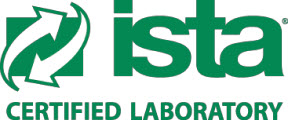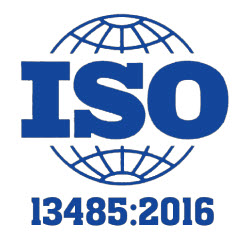Methods
Life Science Outsourcing has in-depth in helping medical device manufacturers select and execute the proper sterilization methods.
Sterilization Overview
Sterilization refers to any process that effectively kills or eliminates transmissible agents (such as fungi, bacteria, viruses, spore forms, etc.) from a surface, equipment, article of food, medication, or biological culture medium.
Medical devices are sterilized initially at the time of manufacturing and, if reusable, must be routinely sterilized and validated to conform to regulatory standards. The sterilization method chosen is based on the product’s ability to withstand heat and extent of sterilization required.
Sterilization Methods
Gamma Sterilization
Gamma rays are very penetrating and are commonly used for sterilization of disposable medical equipment, such as syringes, needles, cannulas and IV sets. Gamma radiation requires bulky shielding for the safety of the operators; they also require storage of a radioisotope (usually Cobalt-60), which continuously emits gamma rays. (Regulatory Standard – ISO 11137).
Learn More
Ethylene Oxide Sterilization
Ethylene oxide (EO or EtO) gas is commonly used to sterilize objects sensitive to temperatures greater than 60°C such as plastics, optics, and electrics. Ethylene oxide sterilizers are used to process sensitive instruments which cannot be adequately sterilized by other methods. However, it is highly flammable, and requires a longer time to sterilize than any heat treatment. The process also requires a period of post-sterilization aeration to remove toxic residues. Ethylene oxide is the most common sterilization method, used for over 70% of total sterilizations, and for 50% of all disposable medical devices. (Regulatory Standard – ISO 11135).
Learn More
Steam Sterilization
A widely used method for heat sterilization is the autoclave, sometimes called a converter. Autoclaves commonly use steam heated to 121-134°C (250-273°F). To achieve sterility, a holding time of at least 15 minutes at 121°C (250°F) or 3 minutes at 134°C (273°F) is required. Additional sterilizing time is usually required for liquids and instruments packed in layers of cloth, as they may take longer to reach the required temperature. To ensure the autoclaving process achieves sterilization, most autoclaves have meters and charts that record or display pertinent information such as temperature and pressure as a function of time. Indicator tape is often placed on packages of products prior to autoclaving. (Regulatory Standard – ISO 17665).
Learn More
E-Beam Sterilization
Electron beam processing is also commonly used for medical device sterilization. Electron beams use an on-off technology and provide a much higher dosing rate than Gamma or X-rays. Due to the higher dose rate, less exposure time is needed and thereby any potential degradation to polymers is reduced. A limitation is that electron beams are less penetrating than either Gamma or X-rays. (Regulatory Standard – ISO 11137).
Learn More
Dry Heat Sterilization
Dry heat sterilization of an article is one of the earliest forms of sterilization practiced. The process utilizes hot air that is either free from water vapor, or has very little of it, and where this moisture plays a minimal or no role in the process of sterilization. The dry heat sterilization process is accomplished by conduction; heat is absorbed by the exterior surface of an item and then passed inward to the next layer.
Eventually, the entire item reaches the proper temperature needed to achieve sterilization. The proper time and temperature for dry heat sterilization is 320°F (160°C) for two hours or 340°F (170°C) for one hour. Instruments should be dry before sterilization since water will interfere with the process. Dry-heat destroys microorganisms by causing coagulation of proteins. (Regulatory Standard – ISO 11138).
Cleaning and Packaging
Cleaning entails the removal of debris and other matter on the device surface that would hinder full penetration of the sterilization process. Cleaning is performed using basic cleaning supplies such as water, detergent, and alcohol.
Devices are pre-packaged before they are put through the sterilization process. This is done so that after sterilization, products aren’t exposed to the elements, and therefore remain sterile at the time of use. Specialized packaging/pouches are used which allow the sterilizing agent such as rays/heat/chemicals to penetrate and purify the device, but also protect the device from external contaminants.
Sterilization Monitoring
The sterilization process and its effectiveness can be monitored using Indicator Tape and by performing spore tests and biological indicator tests. Indicator tape is typically attached to the package/pouch undergoing sterilization and changes color, indicating that desired sterility levels/conditions have been met. Spore tests provide details on the extent of microbial kill on the device.


